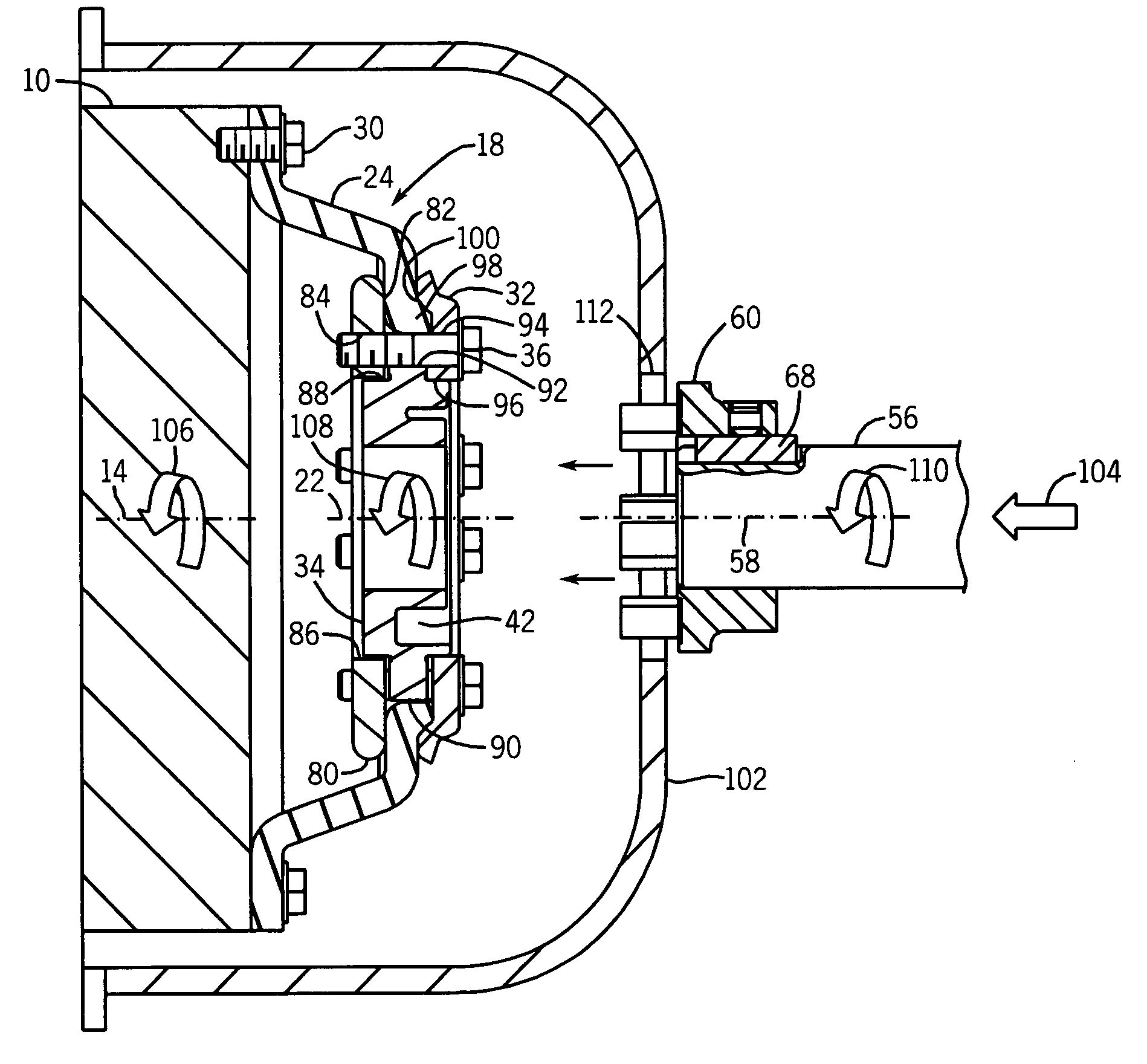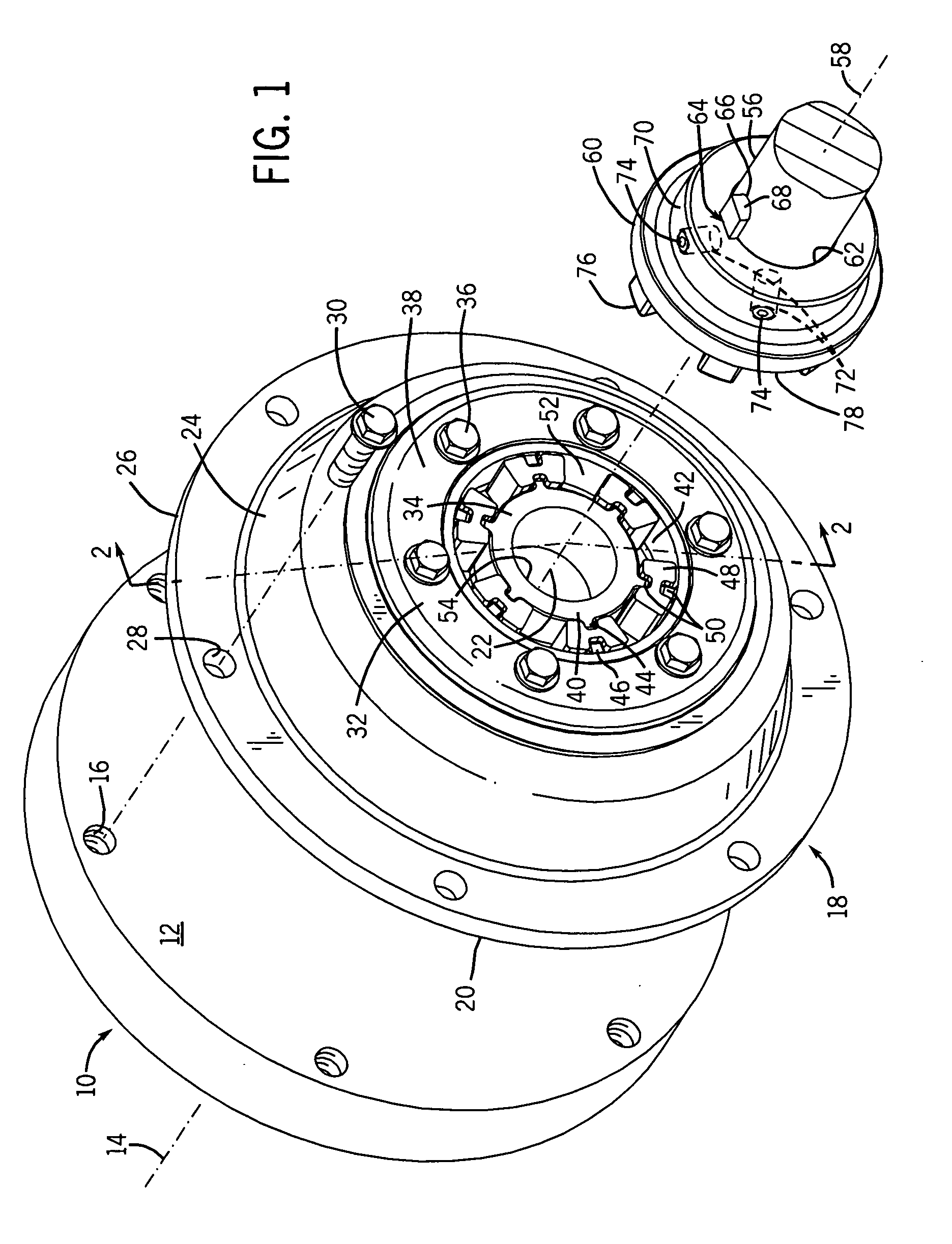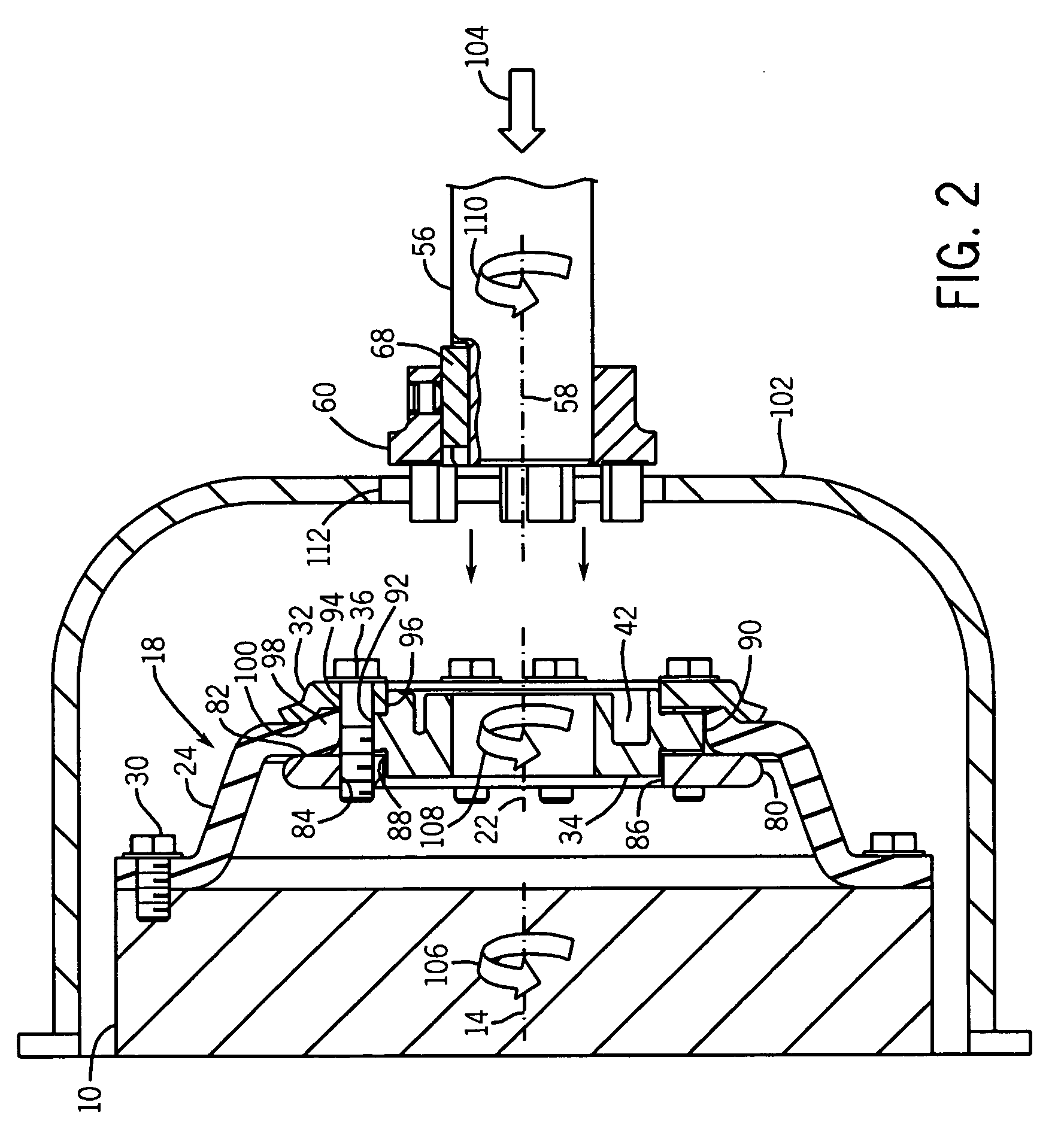Combination compression/diaphragm coupling system
a compression/diaphragm coupling and diaphragm technology, applied in the direction of yielding coupling, rotating vibration suppression, spring/damper, etc., can solve the problems of requiring more operating space than is available, affecting the implementation and performance of couplings, and affecting the performance of couplings
- Summary
- Abstract
- Description
- Claims
- Application Information
AI Technical Summary
Benefits of technology
Problems solved by technology
Method used
Image
Examples
Embodiment Construction
[0015]Turning now to the drawings, FIG. 1 illustrates a flywheel 10 having a front face 12 and rotating about an axis or centerline 14. The flywheel 10 represents the output interface of the first mechanical device. The flywheel 10 might be attached to an engine, for example, and driven by the engine during operation. The flywheel 10 has a plurality of threaded holes 16 located on the front face 12. The threaded holes 16 are located at a specified distance from the centerline 14 so as to permit securement of the coupling system as described below.
[0016]It should be noted that where, in the present discussion, reference is made to a driving or a driven element, this is for convenience only. As will be appreciated by those skilled in the art, the couplings and systems of the present invention may be used in a variety of contexts and with power or torque flow in the directions indicated here, or in an opposite direction.
[0017]A flexible hub assembly 18 has a mating surface 20 that cont...
PUM
 Login to View More
Login to View More Abstract
Description
Claims
Application Information
 Login to View More
Login to View More - R&D
- Intellectual Property
- Life Sciences
- Materials
- Tech Scout
- Unparalleled Data Quality
- Higher Quality Content
- 60% Fewer Hallucinations
Browse by: Latest US Patents, China's latest patents, Technical Efficacy Thesaurus, Application Domain, Technology Topic, Popular Technical Reports.
© 2025 PatSnap. All rights reserved.Legal|Privacy policy|Modern Slavery Act Transparency Statement|Sitemap|About US| Contact US: help@patsnap.com



